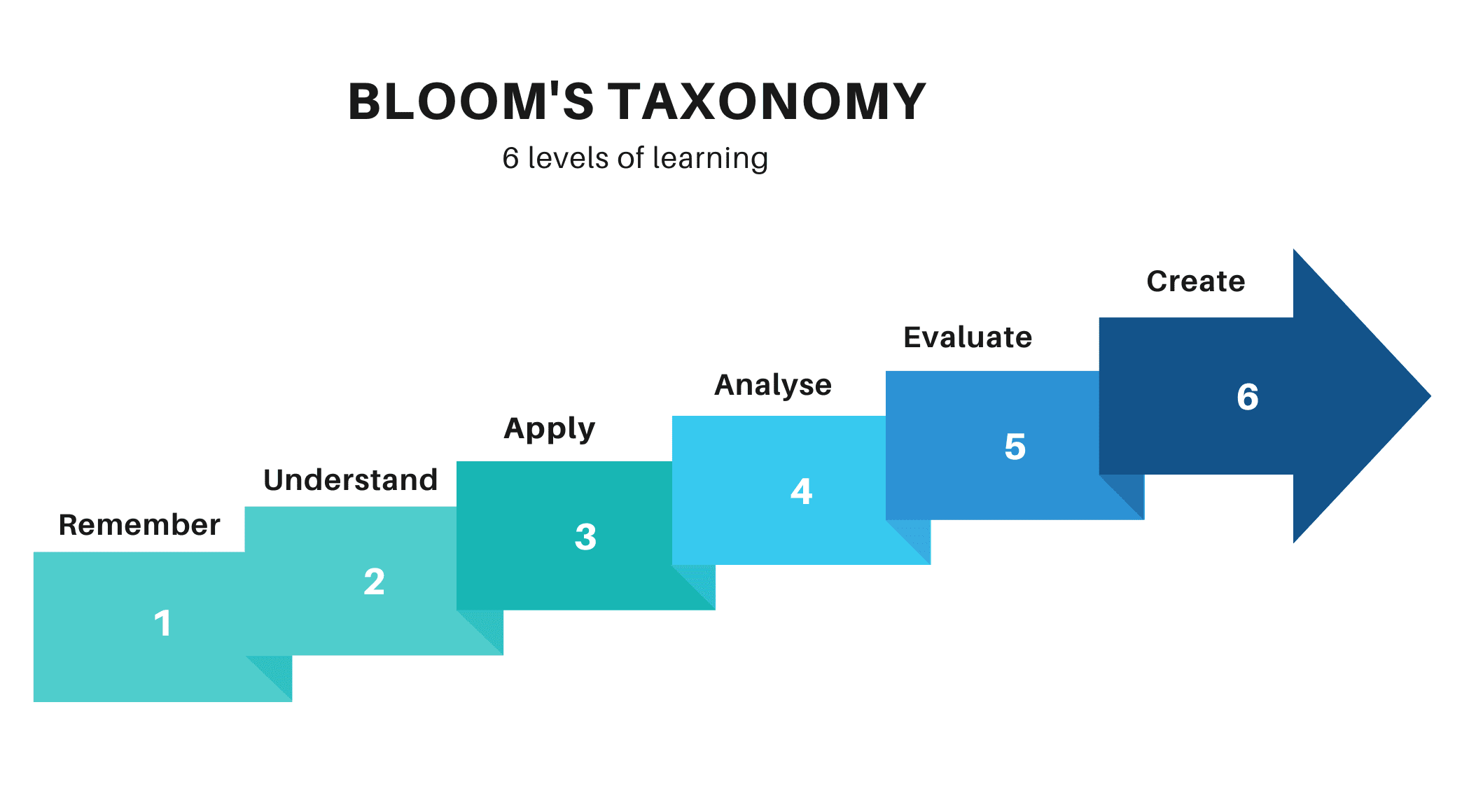
Bloom’s Taxonomy is a framework that categorizes different levels of cognitive learning in which each level depends on the one below.
It’s often depicted in the form of a pyramid—similar to Maslow’s hierarchy of needs. Basic knowledge, the first stage of learning, leads to the development of the skills and abilities that are crucial to completing the pedagogical process: understanding, application, analysis, evaluation and creation. The belief is that students move up through each level of the pyramid in Bloom’s taxonomy, starting from very basic learning, to acquire deeper knowledge on a subject, with each level crucial to the development of the next.
Teachers can apply Bloom’s taxonomy by asking questions and delivering assignments. It can be effectively utilized in educational institutes to facilitate the attainment of Program Outcomes (POs) and Course Outcomes (COs). By aligning instructional strategies and assessment methods with the taxonomy, educators can ensure comprehensive student learning experiences.
Here’s how Bloom’s Taxonomy can be applied to the attainment of POs and COs:
1. Remember:
At the knowledge level, students recall or recognize information. For POs and COs, educators can design learning activities such as reading assignments, lectures, or online modules to impart foundational knowledge. Assessments like quizzes or short answer questions can evaluate students’ ability to recall facts, concepts, or definitions related to the outcomes.
2. Understand:
To achieve comprehension, students demonstrate their understanding of the material. Educators can engage students in discussions, case studies, or group projects that require them to explain concepts, summarize information, or interpret data. Assessments can include tasks like concept mapping, presentations, or written explanations to assess students’ grasp of the outcomes.
3. Apply:
At the application level, students can apply their acquired knowledge and skills to solve problems or complete tasks. Educators can design activities such as simulations, experiments, or real-world projects where students can put their learning into practice. Assessments may involve practical exams, demonstrations, or project-based assessments to evaluate students’ ability to apply the outcomes.
4. Analyze:
Analyzing involves breaking down information into its components and examining relationships. For POs and COs, educators can assign tasks like data analysis, case studies, or research projects where students critically evaluate information and draw conclusions. Assessments can include written reports, research papers, or presentations that showcase students’ ability to analyze and synthesize the outcomes.
5. Evaluate:
Students at the evaluation level can make judgments based on criteria and evidence. To achieve this, educators can engage students in debates, peer reviews, or reflective exercises where they assess and evaluate outcomes against established standards. Assessments might include structured debates, critical reviews, or self-assessments to evaluate students’ evaluative skills.
6. Create:
Creating involves generating new ideas, products, or solutions. To foster creativity, educators can assign tasks such as design projects, research proposals, or innovative problem-solving exercises where students can demonstrate their ability to create new outputs related to the outcomes. Assessments can involve prototypes, portfolios, or presentations that showcase students’ creative abilities.
By aligning instructional strategies and assessments with the different levels of Bloom’s Taxonomy, educational institutes can promote a holistic approach to learning, ensuring that students achieve the desired Program Outcomes and Course Outcomes. Teachers use this tool to design curricula, ensuring that students demonstrate the proper cognitive abilities in each assignment and exam. Students can have clear, concise, and measurable goals to achieve. They answer questions and complete tasks based on which objective is the focus at the time, using measurable verbs like the ones previously noted for each level to elicit the proper types of responses. For example, questions asking students to compare, discuss, and predict will help their basic understanding of a project, while the use of verbs like “investigate” and “relate” suggest that they’ve moved on to the analyzing stage.
JhaMobi has developed one such software tool where Bloom’s Taxonomy is being used for educational attainment of Program Outcome (PO) and Course Outcome (CO) in Educational Institute. This software use the concept of Bloom’s taxonomy in lesson planning and course design.
Students can move from the lower levels to the higher Bloom’s levels of learning through assessments (Quizzes/tests/MCQs) activities which are structured to ensure that they fall in line with each level in succession and achieve deeper level of learning.

